| Capital Extension |
Model is prone with head off the end of the table. model's
arms are at his side. The examiner stands at the side of the model next to
the head. The examiner applies resistance with one hand over the occiput,
and the other hand is placed under the head should it give way with
applied resistance. |
 |
| Capital Flexion |
Model is supine with head on table and arms at side. The
examiner is standing at head of table facing patient. Both hands of
examiner are cupped under the mandible (chin) and touching the cheeks to
give resistance in an upward and backward direction. |
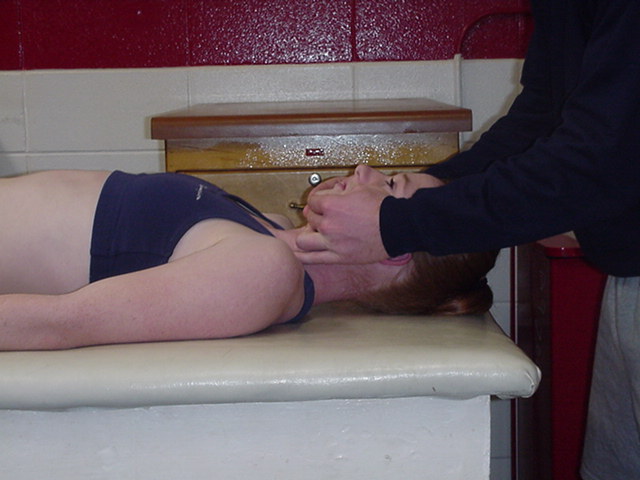 |
| Cervical Extension |
Model is prone with head off the end of table and arms at
side. The examiner stands next to patients head. The examiner
places one hand over the parieto-occipital for resistance and the other
hand is placed under the chin ready to catch the head if it gives way. |
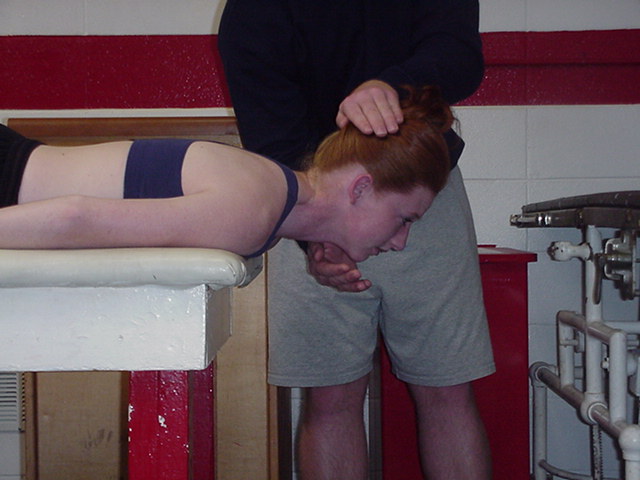 |
| Cervical Flexion |
Model is supine with arms at their side, and head on
table. The examiner stands next to patients head. The examiner
places one hand on the model's forehead for resistance, and the other hand
may be placed on model's chest. Stabilization is only needed when
trunk is weak. |
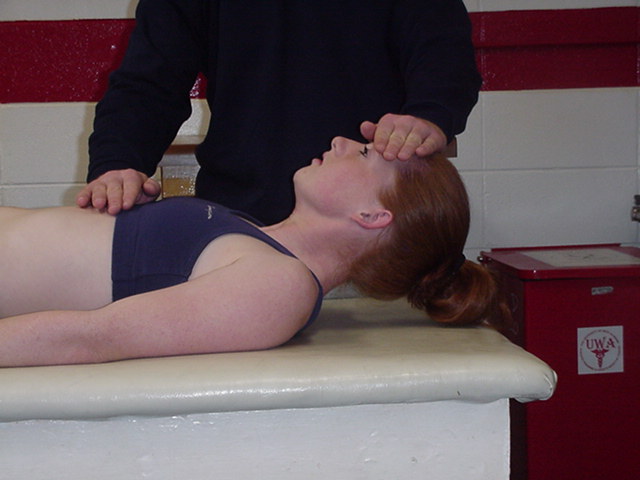 |
| Capital plus Cervical Extension |
Model is prone with head off the table and arms at
side. The examiner stands next to patients head and places one
handover parieto-occipital area to apply downward and forward
resistance. The other hand is placed under the chin to catch the
head if it gives way. |
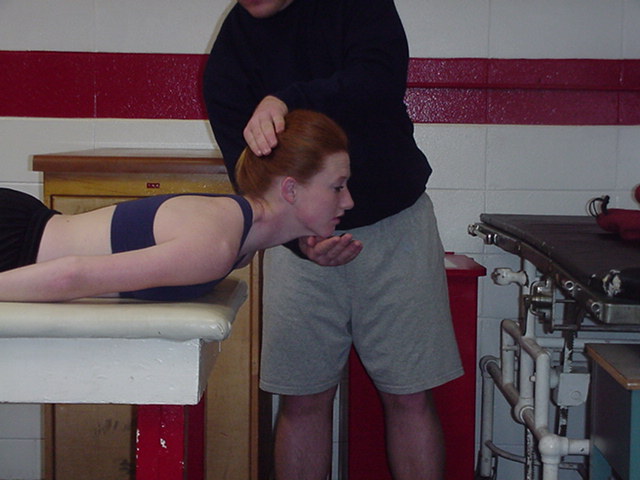 |
| Capital plus Cervical Flexion |
Model is supine with head on table and arms at side.
The examiner stands at the side of the table at the level of the model's
shoulder. One hand is placed on the forehead for resistance and the
other hand may be used for stabilization of the trunk if it is weak. |
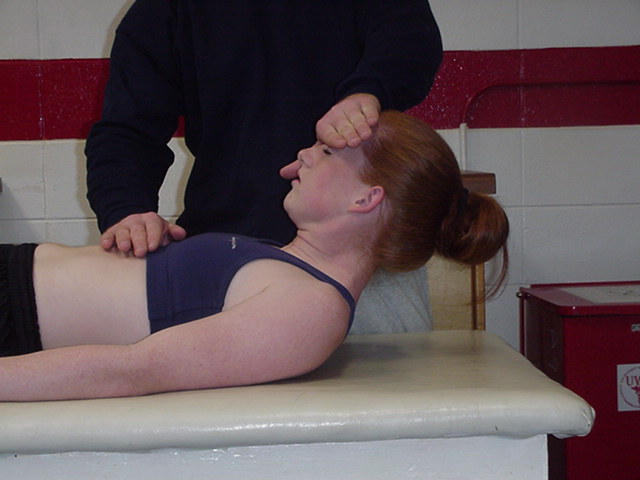 |
| Neck Flexion with
Rotation |
Patient is supine
with head supported on table and turned to the right to test the left
sternocleidomastoid. Therapist faces the patient with one hand placed on
the temporal area above the ear for resistance. Patient raises head from
table against resistance, keeping head turned throughout the movement. |
 |
Hislop, Helen J. & Montgomery, Jaqueline with
contributor Barbara Connelly.






